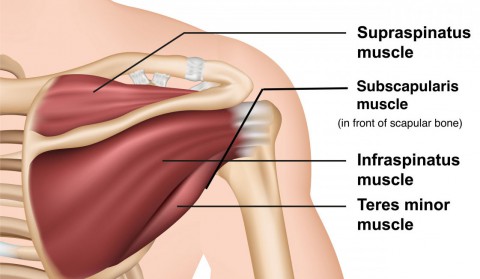
The rotator cuff is a group of four muscles that include the supraspinatus, infraspinatus, teres minor and subscapularis. These muscles provide movement and stability for the shoulder complex. Even though the rotator cuff is more well known, there are several other muscles that attach to the shoulder girdle.
What is Rotator Cuff Tendinopathy?
Rotator cuff tendinopathy "refers to pain and weakness, most commonly experienced with movements of shoulder external rotation and elevation, as a consequence of excessive load on RC tissues" (1). External rotation involves moving the arm away from the body and elevation refers to lifting the arm overhead.
Rotator Cuff Injury
Causes of injury to the rotator cuff can be from external or internal factors. External factors can include poor mechanics, or even pain and/or fatigue leading to altered mechanics. Internal factors include age, genetics, blood supply or altered load (1). Excessive load can occur from one instance involving a trauma or repetitive motion leading to the tendinopathy. The mechanism of injury can also be due to a combination of both external and internal factors. The symptoms of rotator cuff tendinopathy typically include pain, reduced range of motion and weakness (1).
Diagnosis
One of the most common questions after a rotator cuff injury is if imaging is necessary. An x-ray of the bony structures or an ultrasound of the soft tissue structures may be warranted. However, research has shown that it is very common that irregularities can be found on imaging, even in asymptomatic individuals. This means that imaging may not be the gold standard for diagnosing rotator cuff injuries (2).
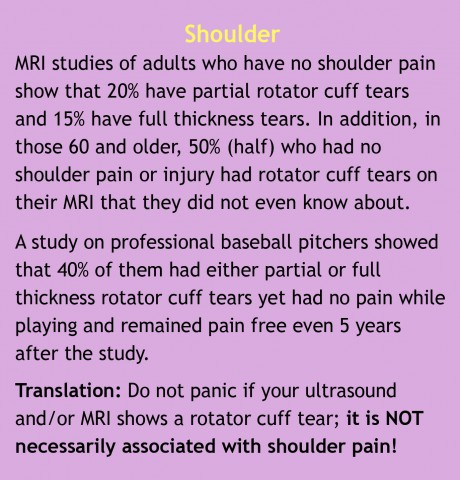
A physiotherapist can assess an individual's movement patterns to determine the possible source of the rotator cuff tendinopathy. This includes a functional assessment of the various parts of the shoulder, as well as the neck and mid back. By assessing the areas surrounding the shoulder, the physiotherapist can determine if a structure other than the shoulder is responsible for the injury. These other areas could lead to poor mechanics and overuse of the rotator cuff.
Treatment
A treatment plan is then developed which will likely include manual therapy and a home exercise plan. It is important to avoid aggravating movements and pushing into pain with rotator cuff tendinopathy without proper direction. To learn more about pain, see Know Pain, Know Gain. Not No Pain, No Gain.
Other options for treatment may include medications or corticosteroid injections. If conservative treatment strategies are not successful, surgical consultation may be a consideration.
Quick Tips
- Avoid excessively hiking the shoulder when performing painful movements. This shortens the muscles and can lead to more pain.
- Avoid holding your breath when you experience pain.
- Be aware of your posture, especially for those who are working from home and at a desk all day.
- Listen to your body and move as tolerated.
- It is important to find a balance between movement and rest.
- Frequently perform pain free movements with the shoulder. These movements can include shoulder shrugs or pendulums.
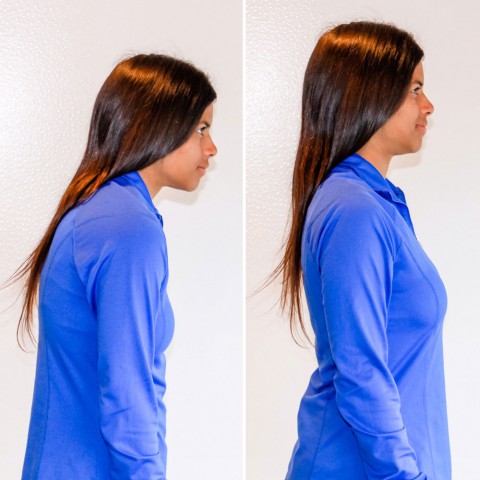 Less optimal shoulder posture vs ideal posture. Ideal posture can improve shoulder movement patterns.
Less optimal shoulder posture vs ideal posture. Ideal posture can improve shoulder movement patterns.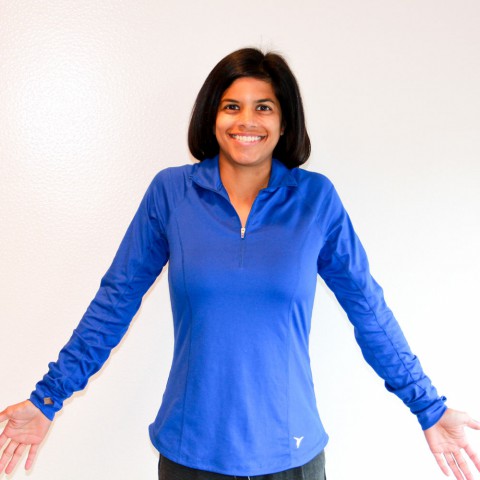 If shoulder shrugs are properly performed throughout the day, they can provide relief from muscle tension and pain.
If shoulder shrugs are properly performed throughout the day, they can provide relief from muscle tension and pain.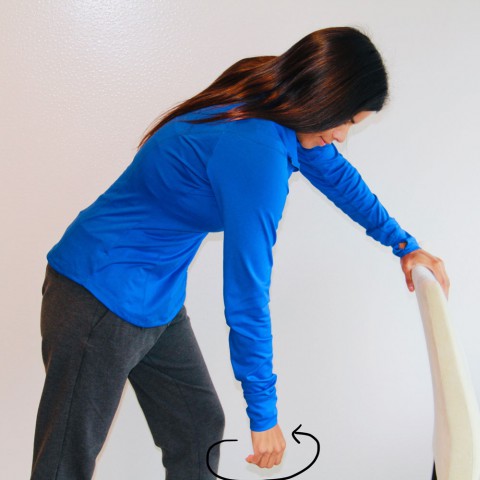 Use a sturdy surface to lean on, let the sore arm hang and move it in a circular motion to relieve tension in the muscles and shoulder joint.
Use a sturdy surface to lean on, let the sore arm hang and move it in a circular motion to relieve tension in the muscles and shoulder joint.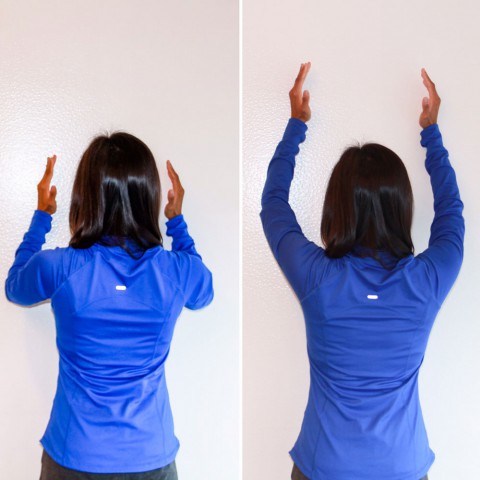 Wall slides can strengthen the muscles around the shoulder blade to improve movement patterns.
Wall slides can strengthen the muscles around the shoulder blade to improve movement patterns.References
- Lewis J, McCreesh K, Roy JS et al. Rotator cuff tendinopathy: Navigating the diagnosis-management conundrum. J Orthop Sports Phys Ther 2015;35(11): 923-937
- Lewis J. Rotator cuff related shoulder pain: Assessment, management and uncertainties. Manual Therapy 2016;23:57-68
